Copper examples of medals that were awarded to three largely forgotten American Revolutionary War he
Here are three medals struck in copper that were made for three, largely forgotten American Revolutionary War heroes: Daniel Morgan, John Howard and William Washington.
Morgan led a force composed of state militia, Virginia veterans and regular Continental Army troops against the British at the Battle of the Cowpens. It was an important victory because it blunted what had been a successful British campaign in the southern states. The Continental Congress voted to award a gold medal to Morgan and silver medals to Howard and Washington.
This copper piece was struck from set of dies that were very close the original die pair. In the late 1830s Daniel Morgan's family noted that his gold medal had been lost. They asked for a replacement, and a set of dies were made to produce it. This is a copper piece that was made from that set of dies, probably at the Paris mint. Later the U.S. made examples of this medal from the same die pair.
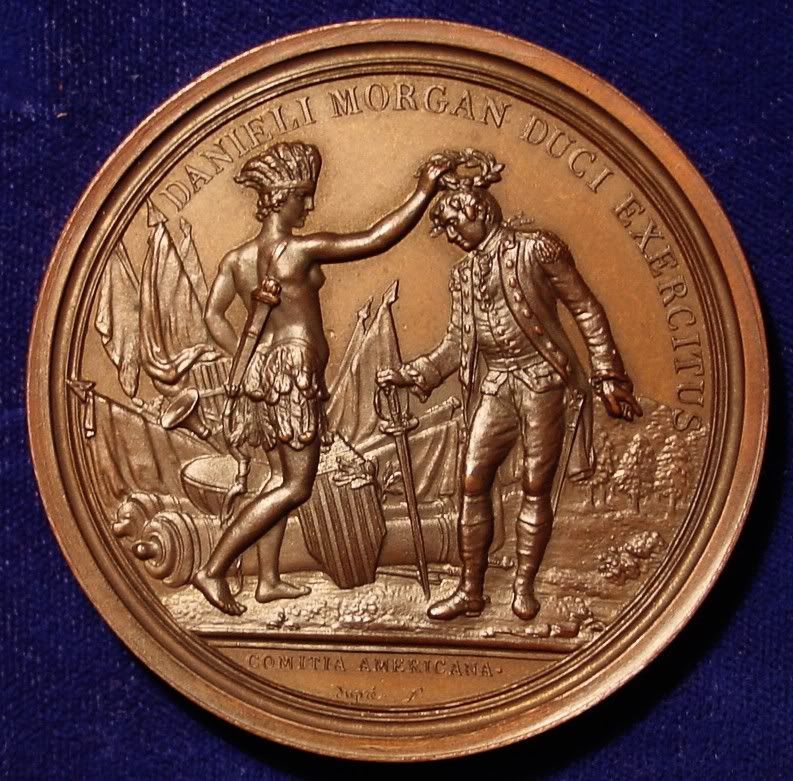
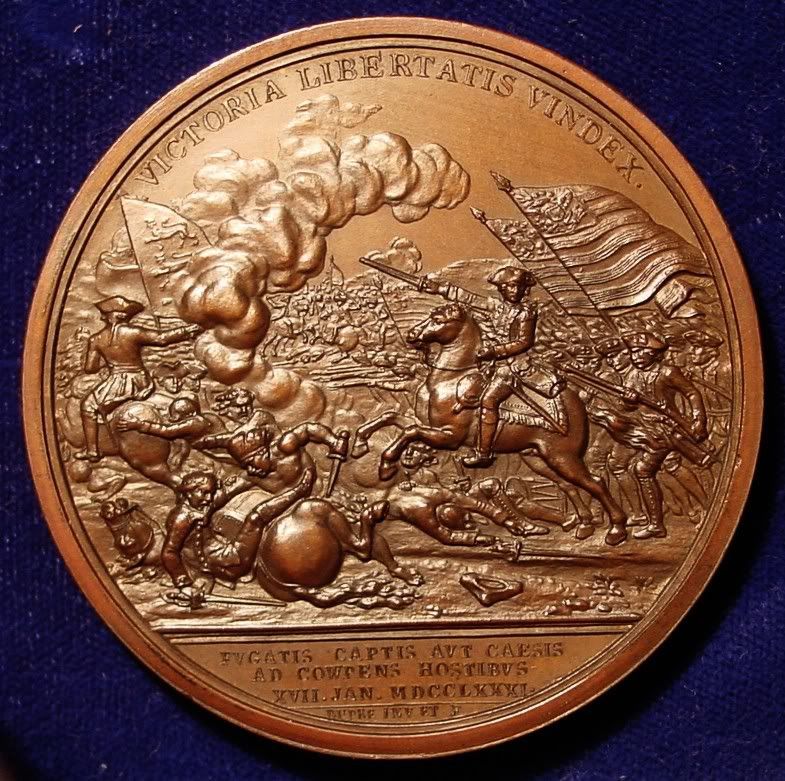
And here are copper examples of the medals that the Congress awarded to John Howard and William Washington. Both of these pieces were struck from the original dies at the Paris mint sometime before 1840.
John Howard's medal, which was covered in an article in this month's issue of The Numismatist.
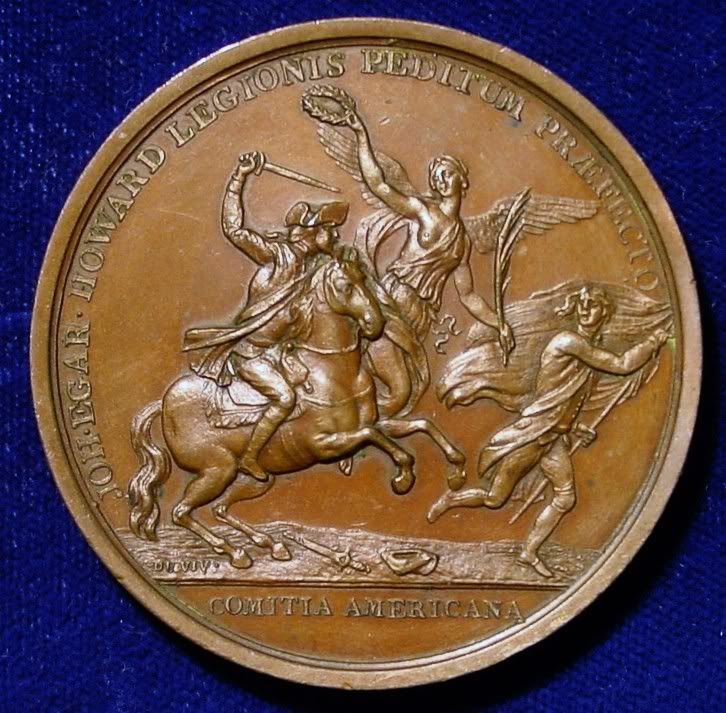
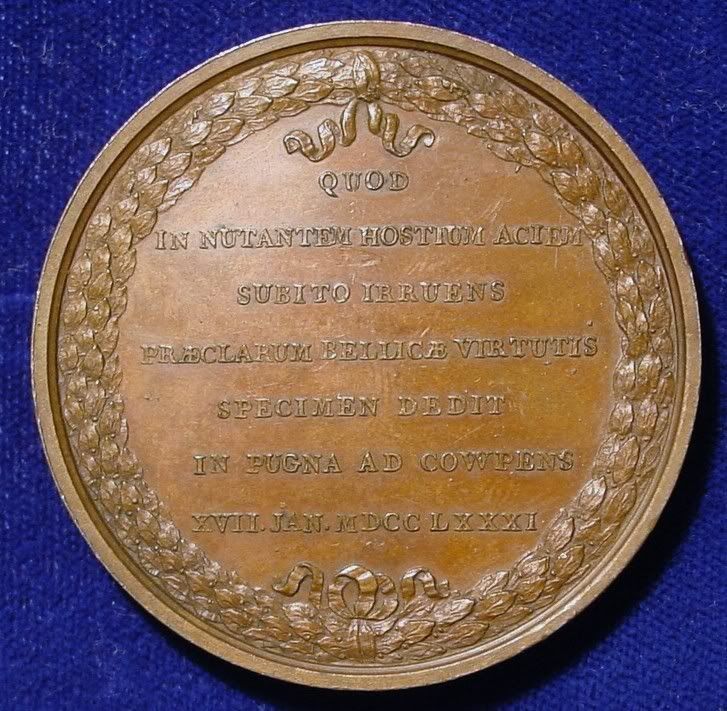
And William Washington's medal. Washington was a distant relative of George Washington.
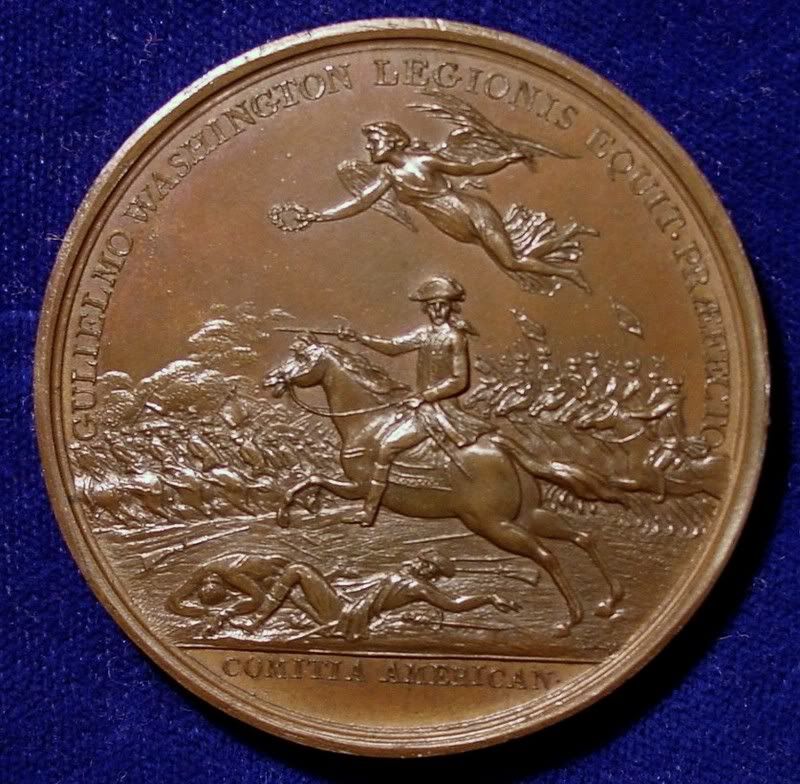
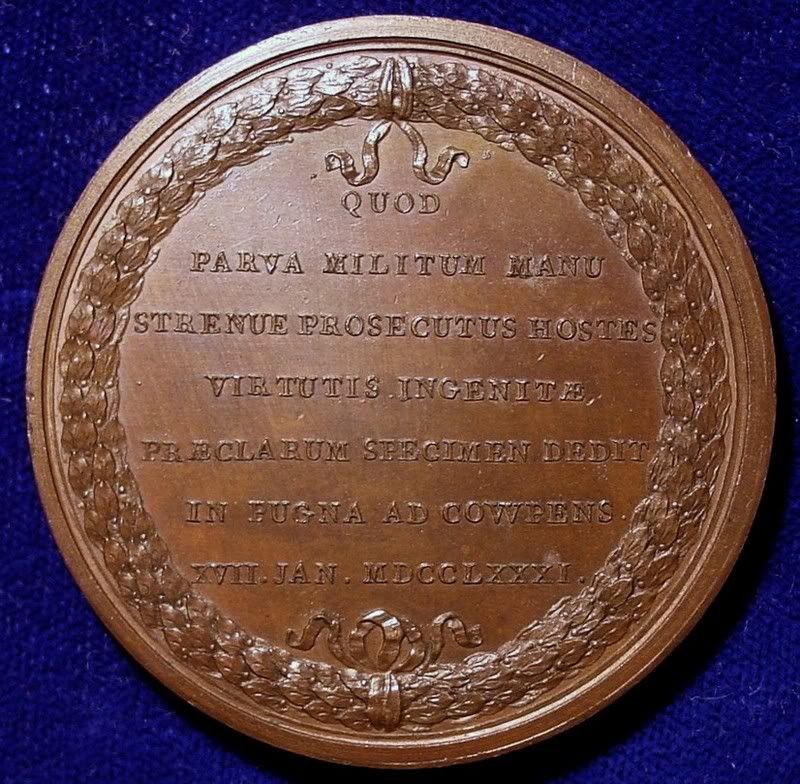
Morgan led a force composed of state militia, Virginia veterans and regular Continental Army troops against the British at the Battle of the Cowpens. It was an important victory because it blunted what had been a successful British campaign in the southern states. The Continental Congress voted to award a gold medal to Morgan and silver medals to Howard and Washington.
This copper piece was struck from set of dies that were very close the original die pair. In the late 1830s Daniel Morgan's family noted that his gold medal had been lost. They asked for a replacement, and a set of dies were made to produce it. This is a copper piece that was made from that set of dies, probably at the Paris mint. Later the U.S. made examples of this medal from the same die pair.


And here are copper examples of the medals that the Congress awarded to John Howard and William Washington. Both of these pieces were struck from the original dies at the Paris mint sometime before 1840.
John Howard's medal, which was covered in an article in this month's issue of The Numismatist.


And William Washington's medal. Washington was a distant relative of George Washington.


Retired dealer and avid collector of U.S. type coins, 19th century presidential campaign medalets and selected medals. In recent years I have been working on a set of British coins - at least one coin from each king or queen who issued pieces that are collectible. I am also collecting at least one coin for each Roman emperor from Julius Caesar to ... ?
0
Comments
I know medals are a completely different animal than circulating coinage, but the designs on some of these medals is just pure art work!
Great post!
To think, most if not all educated persons in America could translate the latin inscriptions.
What is the size of these pieces?
"Inspiration exists, but it has to find you working" Pablo Picasso
The Howard and Washington medals are 1 and 3/4 inches in diameter.
I think it would be great if there was a reference website / book covering all the awarded Congressional gold medals from those to the present.
- Marcus Tullius Cicero, 106-43 BC
one with a terrific design by Augustin Dupre that conveys such
action. Here's a short bio on Dupre.
Dupre, Augustin: Augustin Dupre (1748-1883) was a French goldsmith, medallist and engraver general of coins under the First French Republic. At the age of twenty he left his native town of St. Etienne and went to Paris. There he worked or an armorer and obtained the patronage of the Spanish Ambassador. The artist won his greatest fame as a medallist and coin engraver. He filled the office of Engraver-general of French coins from 1791 to 1803.
The bottom two appear to be designed by Duvivier, although it's hard to see the signed name
on the one for William Washington.
Duvivier, Pierre Simon Benjamin: Benjamin Duvivier (1728-1819), a French medallist, was the son on Jean Duvivier. It is said that Jean, fearing to be surpassed by his son, not only did not teach Benjamin medallic art, but actually drove him from his home when the son was caught copying a medal. Benjamin was taken under the protection of his brother-in-law, and on the death of his father, he devoted himself to the king’s service, becoming one of the favorite artists of the Court of Louis XVI. In 1774 Duvivier was given the office of Engraver at the Mint, formerly held by Joseph Charles Roettiers.
Always love to see medals like these with such artwork!
R.I.P. Bear
<< <i>Bill, very nice post and great images! I especially like the top
one with a terrific design by Augustin Dupre that conveys such
action. Here's a short bio on Dupre.
Dupre, Augustin: Augustin Dupre (1748-1883) was a French goldsmith, medallist and engraver general of coins under the First French Republic. At the age of twenty he left his native town of St. Etienne and went to Paris. There he worked or an armorer and obtained the patronage of the Spanish Ambassador. The artist won his greatest fame as a medallist and coin engraver. He filled the office of Engraver-general of French coins from 1791 to 1803.
The bottom two appear to be designed by Duvivier, although it's hard to see the signed name
on the one for William Washington.
Duvivier, Pierre Simon Benjamin: Benjamin Duvivier (1728-1819), a French medallist, was the son on Jean Duvivier. It is said that Jean, fearing to be surpassed by his son, not only did not teach Benjamin medallic art, but actually drove him from his home when the son was caught copying a medal. Benjamin was taken under the protection of his brother-in-law, and on the death of his father, he devoted himself to the king’s service, becoming one of the favorite artists of the Court of Louis XVI. In 1774 Duvivier was given the office of Engraver at the Mint, formerly held by Joseph Charles Roettiers.
Always love to see medals like these with such artwork! >>
- Marcus Tullius Cicero, 106-43 BC
<< <i>all 3 have exposed nipples too!
mozeppa, Your easily excited... aren't you